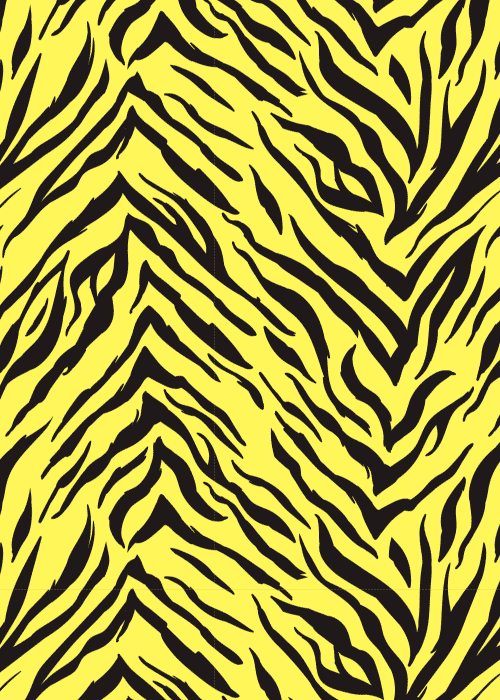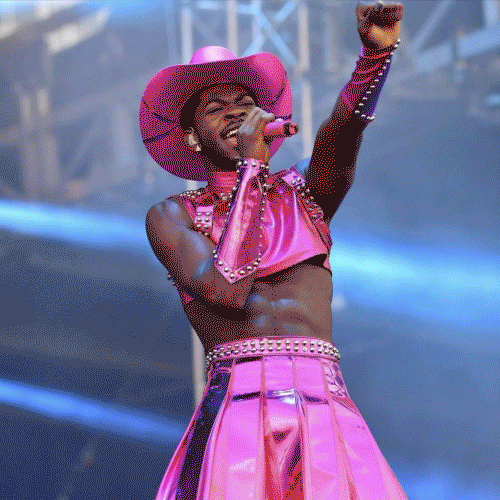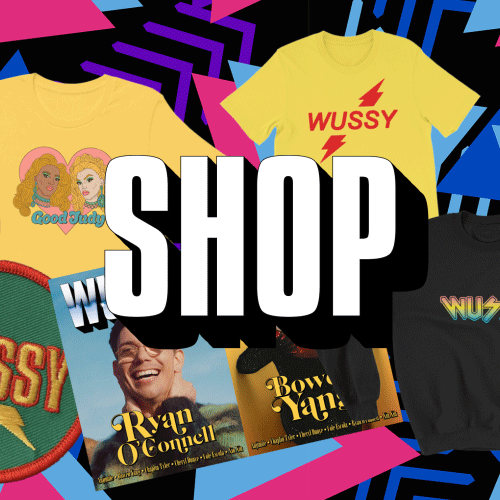Queering the Street Art Scene with Jeremy Novy
Jeremy Novy’s eighteen-year stint stenciling and wheatpasting hasn’t been the easiest. Navigating a scene that has long been cis-bro and homophobic, Novy’s dedicated duration to creating sidewalk koi, queer CareBears, bondage boys and other relics of colorful camp loudly and proudly has upped queer visibility in street art. Celebrating pop culture once confined to gay bars, XXX fag mags, kink clubs and B-movies, Novy’s use of urban spaces in cities like Chicago, Milwaukee, Atlanta, and Honolulu has received ample attention, both from the art world and the queer community.
Though having lived in NYC and San Fran, Novy has a special affinity for NOLA where he was commissioned to do works all over the French Quarter. Now living in gay ol’ Guerneville, nom-ing on farm-fresh foods and living the good life as a sexy ginger bear in rural California, Novy continues to donate art to many queer charities. Currently Novy compiles DIY art made by queer artists from all over the world and has created a vast online resource via the History of Queer Street Art FB page.
Why is it important for you to make art in a public space?
Public art allows for 100% of the demographic of a city to see your art. When it comes to museums or art exhibits you only reach a small demographic of people that typically are white, wealthy, and educated. Art isn’t just for the bourgeoisie, nor is it meant to be locked away and charged to be viewed.
How has your art background converged with what you do currently?
I started using spray paint in high school as a means to give this weird gay artist something to secretly do! I painted freight trains that would come and go from the canning factory in my backyard. After moving to NYC in 1999 for a year, I quickly began to see street art as something more than letters and names tagged on walls. My first art degree in graphic design lead me to create stencils just as if I was vectoring an image or making a logo. By my second art degree in photography, I was using stenciled posters wheat pasted on the streets as a still life meant to be seen as a photograph.
What was the appeal of the DIY ethos that led you away from gallery work?
When I started, I wanted to make art that everyone can see, as well as maybe political art that would not be able to be shown in a gallery. There also was a time when no matter what you made or how well it was executed, it was still cool. Now it’s all dominated by murals and legal art that doesn’t have the same surprise aspect as street art. There is also the price of street art compared to an exhibit of large format printed photographs, mounted and framed with glass. You’re looking at $1000, most likely more. For $9, I can buy a can of spray paint. With three cans I can do roughly thirty koi fish on the street. The koi fish will last longer than the exhibit and it only cost me roughly $30 dollars, including vinyl for the stencil. It just all made more sense.
What was your first real experience seeing the street art and the gallery scenes collide?
In Brooklyn around 1998, there was the very first exhibit of street art in the world called “Beautiful Losers.” It didn’t have all these rules you find with other art forms. If you don’t paint, sculpt, or even photograph in a specific way, it’s not art. Street art had no rules! But there have since come some standards as to what is good or bad street art.
What’s been your most fulfilling works or praise?
My 2001 stencil of Divine would have to be one of my more impactful pieces. It helped raise money for the movie I Am Divine and landed my name in the credits of the film as well as getting a movie postcard that on the back reads, “Jeremy, Thank You and Stay Filthy. John Waters.” But I do have to say the most significant thing I have done would be starting this collection of Queer Street Art in 2008 that received funding from the National Endowment for the Arts (NEA) and was shown in the 2011 National Queer Art Exhibit in San Francisco. It also was exhibited at Yale University in 2013, the same gallery in which [Robert] Mapplethorpe exhibited his photographs that caused all the commotion for their NEA grant funding.
How has your queer identification influenced your work?
I was introduced to the homophobia that exists in graffiti culture at a very young age. Being a queer graffiti artist meant “FAG TAGGER” would be sprawled across your art. Mix that with the extremely heterosexual-dominated world of lowbrow art and you find queer street art doesn’t fit in. In 2008 when I moved to San Francisco, a city known for queer street art and knowing that a large demographic of the city was queer, I wanted to start placing queer images on the streets and start talking about the homophobia that exists in the art form’s subculture.
Does your work reflect your own personal aesthetic leaning or more so that of queer culture at large?
It’s generally about a super queer image on the street. There is no way to mistake a drag queen or a leather guy as anything other than queer. There are times I make political pieces more specific to something in queer history or current queer culture but really, it’s just about the lack of visibility of queer images in American culture, period, and specifically [in] street art and lowbrow art. But everything has a very strong connection to who I am as an artist, my art style, and my political points of view, however visible or invisible these may appear to the viewer.
Have you been scrutinized for the subject matter of your work?
I have been scrutinized on several levels involving my art, and even then, [they’ve gone] as far as attacking me as a person when attacking my art no longer works. I’ve been told, not asked, told, “Who do you think you are, speaking for the queer community? You don’t speak for me, vandalism is not activism, your art gives the queer community a bad name.” I’ve had exhibits and art projects cancelled, negative newspaper interviews and articles, and murals vandalized. I’ve been called crazy, a rock star, a drug addict, someone who commits homophobic acts, a thief . . .
Were you aware of many queer street artists before your own ventures?
Not as many as I ended up finding when I started the collection and Facebook page. But I did know it was important for me to do something NEW and take it as far as I could, being as new as possible while still being about me and my political points of view. It’s helped spread the message about the homophobia in the street art world, as well as document important ephemeral art that can truly be looked at as protest art, very similar to art of the women’s movement or the Black Panther party. It’s given a network to other queer street artists around the world who have felt they were the only queer street artist in their city.
Sunni Johnson is an Atlanta musician, artist, and zinester.
Archive
- February 2025
- November 2024
- October 2024
- September 2024
- August 2024
- July 2024
- June 2024
- May 2024
- April 2024
- October 2023
- July 2023
- June 2023
- May 2023
- April 2023
- March 2023
- February 2023
- June 2022
- April 2022
- March 2022
- January 2022
- December 2021
- October 2021
- September 2021
- August 2021
- July 2021
- June 2021
- May 2021
- April 2021
- March 2021
- February 2021
- January 2021
- December 2020
- October 2020
- September 2020
- August 2020
- July 2020
- June 2020
- May 2020
- April 2020
- March 2020
- February 2020
- January 2020
- December 2019
- November 2019
- October 2019
- September 2019
- August 2019
- July 2019
- June 2019
- May 2019
- April 2019
- March 2019
- February 2019
- January 2019
- December 2018
- November 2018
- October 2018
- September 2018
- August 2018
- July 2018
- June 2018
- May 2018
- April 2018
- March 2018
- February 2018
- January 2018
- December 2017
- November 2017
- October 2017
- September 2017
- August 2017
- July 2017
- June 2017
- May 2017
- April 2017
- March 2017
- February 2017
- January 2017
- December 2015
- November 2015
- October 2015
- September 2015
- August 2015
- July 2015
- June 2015
- May 2015
- April 2015













